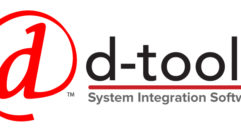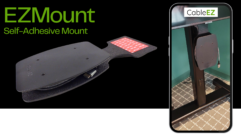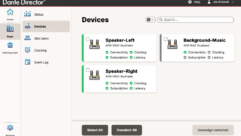THE ROAD to cash-flow management
Aug 1, 2000 12:00 PM,
Alan Kruglak
One of my favorite commercials of the 20th century was Wendy’s Hamburger’s”Where’s the beef?” For those unfamiliar with this classic commercial, anold lady orders a hamburger from different fast-food restaurants only toreceive a large bun with a hamburger the size of a small button. Thiscommercial successfully highlighted the difference between Wendy’s largehamburgers with those of its competitors, catapulting the Wendy’s chaininto the big league of the fast food world.
Although I do not frequent fast-food restaurants, I have had a “Where’s thebeef?” experience in business. At the end of every month, our comptrollerissued a statement showing our profit for that month as well as ouryear-to-date performance. Accordingto our comptroller, we were making a lotof money. Boy, was I relieved. I then asked our comptroller why are wealways in the middle of a perpetual cash flow crisis if we are making a lotof money. In other words, where is the cash?
Somewhere in the back of my mind, I was always a little worried that thecomptroller may have absconded with our cash. Then, he gave me a quicklesson in Accounting 101, real-world applications. He said, “Alan, in anyfast-growing business, there is a strong probability that cash will beconsumed at a faster rate than replenished by profits. Although we’remaking money, we are in a negative cash-flow position. In this case, yourpaper profits are in your accounts receivables (AR), in new trucks and inadditional infrastructure. For most businesses without limited capitalreserves or access to expanded credit facilities, profitability, althoughimportant, is not the key; it’s the cash flow that’s king.”
Positive cash flow
For a non-accountant type like myself, it just did not make sense, butmaking sense does not necessarily have anything to do with meeting payrollor paying our bills. We knew that if we were going to continue growing at a30% rate, then we needed to do something about changing the direction ofour cash flow.
The first step is to minimize cash outflows. Except for payroll, thebiggest cash outflow is for materials and services. One approach used bymost companies is to slow-pay vendors, sometimes using the line that thecheck is in the mail. Although we used this approach on numerous occasions,it tended to create animosity between our company and our suppliers, andthey ultimately viewed our company as unreliable.
To build better vendor relations and minimize cash outflow, we took analternative approach. First, we talked with our key major suppliers andtold them the truth. The truth was that business was great, but we arehaving some minor cash-flow problems. We asked if they could work with us,and we negotiated with our two largest creditors, converting our existingdebt into a two-year, non-interest-bearing note. They agreed, providing wewould pay all current invoices within 45 days. It was a big win for us, andit was also a big win for our vendors. The last thing a key vendor wants isfor an important client with a large AR to go paws up.
Next, we asked all of our vendors for 60-day payment terms. Half of themagreed without a fight. It is sometimes amazing what you get when yousimply ask for it.
The next step is to maximize cash inflows. To accomplish this, weinstituted several steps that are simple and easy to do. First, all newproposals included a clause requiring a 40% deposit. To get the salespeopleto promote this deposit requirement, we gave them an additional 1%commission on all deposits. This incentivized them to sell deposits ratherthan roll over when the customer objected to the clause. Obviously, not allclients will give you a deposit, especially on new construction projects,but as I have said in many previous columns, if you do not ask for it, youwill never get it.
Second, we closely managed our ARs. When a large invoice was sent to aclient, we would follow up with a phone call five days later to make surethey received the invoice. From our experience, it was always too easy fora slow-paying client to say that he never received the invoice.
For those clients who were slow payers, we actively engaged the services ofthe salesperson. When an invoice went past 60 days, the salesrepresentative would call the end-user, asking for help from theiraccounting department.
Third, for any retentions on new-construction projects, we asked the clientto authorize the general contractor to reduce our retention from 10% to 5%.More times than not, the client agreed.
Fourth, wherever possible, we front-loaded our contracts. For instance,when we had to provide a detailed schedule of values, we listed the unitprice of materials at their list price rather than their discounted bidprice. We also include a large sum of money for mobilization and start-upcosts, which was invoiced at the very beginning of the project.
Finally, we included a progress billings clause in our proposal, enablingus to bill for materials stored at our facilities. In the old days, wewouldn’t bill the client until we were finished with the project. If aproject took several months, this would have a crippling effect on our cashflow because we would have to pay for materials without generating any cash.
There is no easy solution for solving cash-cflow problems, even when youare busy and making a ton of money on paper, but by breaking the probleminto discrete, solvable tasks, combined with using the powerful “If youdon’t ask, you don’t get” statement, the process becomes more manageable.This allows you to spend more time on the other parts of your growingbusiness or perhaps even sit down for lunch at a slow-food restaurant.










